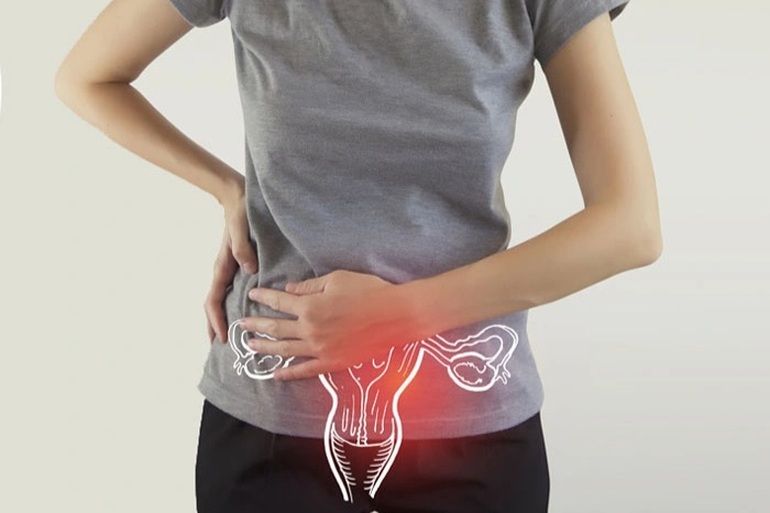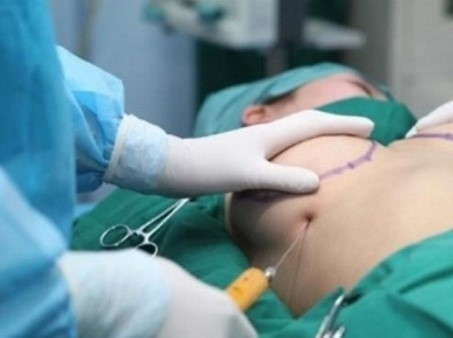Detecting uterine fibroids, what should you do?
(Dan tri) – When there are uterine fibroids, we need to pay attention to the location, size, number of tumors as well as the symptoms caused by the tumor.
According to Tu Du Hospital, uterine fibroids, also known as uterine fibroids, are a completely benign disease of the uterus and are common in women of reproductive age. According to an American study, 40-60% of women over the age of 35 have uterine fibroids, for women near the age of 50, the frequency of uterine fibroids is 70-80%.
When there are uterine fibroids, we need to pay attention to the location, size, number of tumors as well as the symptoms caused by the tumor. A person can have one or more fibroids at a time, in different locations and sizes. Depending on the location and size of the fibroid tumor, the patient may experience symptoms such as menstrual irregularity, tumor pressing on nearby organs, lower abdominal pain, infertility…

Over time, most fibroids grow very slowly. It should be noted that if the tumor grows too rapidly, it may be a manifestation of malignancy. As a woman enters menopause, fibroids tend to get smaller.
Currently, there is no effective way to prevent the occurrence of uterine fibroids. However, losing weight, maintaining a healthy weight, and eating a diet rich in vegetables and fruits can contribute to a lower risk of fibroids.
What symptoms can uterine fibroids cause?
In the majority of cases, fibroids do not cause any symptoms. A woman may only discover fibroids by chance during a routine gynecological exam or for other reasons.
Sometimes, uterine fibroids cause the following symptoms:
– Menstrual disorders: Prolonged menstrual bleeding (menorrhagia) or excessive menstrual bleeding (hypermenorrhea) is a common menstrual disorder caused by uterine fibroids. Heavy bleeding causes women to develop iron deficiency anemia, fatigue, reduced ability to work and affect their quality of life.
– Symptoms caused by the large tumor causing compression such as: The lower abdomen is enlarged, painful; Urinary tract compression causing difficulty urinating, frequent urination, hydronephrosis; Intestinal compression causes constipation or compression of the great veins causes edema and increases the risk of venous thromboembolism.
– Lower abdominal pain: Pain symptoms may appear during menstruation, during intercourse or pain due to necrosis or degeneration of the tumor.
Infertility and pregnancy complications: Some cases of fibroids can cause infertility or increase the risk of miscarriage and some complications to pregnancy such as premature birth, placental abruption, fetal growth retardation. ..
When should uterine fibroids be treated?
In most cases, fibroids do not cause any symptoms, so no treatment is needed. Patients need to have regular gynecological examinations every year to monitor the tumor’s condition or re-examine when the symptoms begin to appear that need treatment.
Treatment will be required when fibroids cause at least one of the symptoms listed above. The method of treatment is chosen depending on what symptoms the patient is experiencing, the severity, the age and the desire of the patient to have children.
Available treatments include:
Medications: The drugs being used today are mainly used to treat symptoms of menstrual disorders or pain. They do not work to make fibroids disappear.
Uterine fibroid surgery: Removes existing fibroids, helping to relieve symptoms caused by these fibroids. However, there is still a risk that new fibroids will recur in the future. Surgery can be done vaginally or abdominally, laparoscopically or open, depending on the location and size of the tumor.
Hysterectomy: This method is used when other treatments have not worked and the patient does not want to have more children.
Uterine artery embolization (UAE): This procedure accesses the tumor through a blood vessel. Experts will block the blood vessels that supply blood to the fibroid, leading to lack of blood supply and causing the tumor to shrink.
Surgery with high intensity focused ultrasound under localization of magnetic resonance (MRgFUS): This is a new method. Ultrasound waves are used to destroy fibroids. The long-term effectiveness of the method is still being studied.
at Blogtuan.info – Source: dantri.com.vn – Read the original article here



